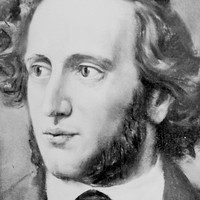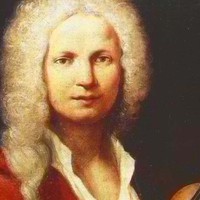SPCO at Lake Harriet



Until the age of 21, Ludwig van Beethoven lived in his hometown of Bonn, Germany. He had the makings of a child prodigy — at 11, his piano and composition teacher predicted in a magazine article that the boy would be a “second Wolfgang Amadeus Mozart” — but that sort of high-profile touring career never materialized. Instead, Beethoven entered his twenties as a viola player in Bonn’s court orchestra.
In 1792, a patron paid for Beethoven to travel to Vienna for composition lessons with Franz Joseph Haydn. It was meant to be a short stay, but Beethoven abandoned his plan to return home once he saw that he could follow in the footsteps of his hero Mozart (who had died less than a year earlier) and make a living as a freelancer. Besides performing as a pianist, Beethoven taught lessons, cultivated private patrons, and wrote accessible music for the publishing market, all setting the stage for a composing career that flourished in the next decade.
Beethoven probably wrote this Sextet for two horns and string quartet in 1794 or 1795, although nothing definitive is known about its origins until it was published in 1810 (which accounts for its deceivingly high opus number). Most likely he wrote it for some occasion in Bonn, where he knew the Elector’s orchestra well from his days in the viola section. The publisher who eventually printed the score, Nikolaus Simrock, was also a horn player in that orchestra and a longtime friend.
In writing for the more conservative audience of provincial Bonn, Beethoven grounded his score in popular practices from past decades. Composers from the first half of the eighteenth century delighted in writing concertos for two horns with strings, including examples from Handel and Vivaldi, and Beethoven’s Sextet really functions the same way, with the horns acting more like soloists than co-equal members of a chamber music ensemble. In the more recent past, Mozart had scored a number of Divertimentos for two horns and strings, showing how such an ensemble was ideal for producing light-hearted entertainment, especially outdoors. Within this easygoing setup, Beethoven wrote vibrant and virtuosic music that made the most of the horns and their association with the countryside, including hunt-inspired calls in the finale.
Aaron Grad ©2021

Jazz Montmartre (Jazzhus Montmartre) is a jazz club in Copenhagen, Denmark, where legendary musicians I appreciate have performed, including trumpeter-singer Chet Baker and saxophonist Dexter Gordon.
In 2020, right before the pandemic, I was scheduled to record an album with Marlyn Mazur and bassist Thomas Fonnesbaek. Because the recording was canceled, I never had the chance to realize this dream, years in the making. I decided to actualize this vision in another way, as the opportunity to write a duet for musicians of The Saint Paul Chamber Orchestra presented itself.
I became curious about what would happen musically by capturing the essence of an opening set in a jazz club.
So, this piece brings the concept of improvised music through a note-for-note transcription of musical ideas instead of relying on actual improvisation.
Clarice Assad ©2021

As chamber music for small ensembles became less fashionable in the middle decades of the 19th century — a period that glorified Romantic grandeur and hyperbole — Felix Mendelssohn bucked the trend. He had spent his childhood and adolescence playing chamber music with the best young musicians around Berlin, and his schooling in the works of bygone masters, from Johann Sebastian Bach to Wolfgang Amadeus Mozart, gave him an unusually broad perspective on chamber music’s pure and intimate expressivity.
Mendelssohn’s two string quintets, one from his teenage years and one from near the end of his too-short life, both hark back to Mozart’s model. Whereas the string quartet had been a fixed quantity for generations (consisting of two violins, viola and cello) the quintet was more fluid. Mozart preferred a second viola, adding extra nuance to the inner voices; more recently, composers including Luigi Boccherini and Franz Schubert had used a second cello instead, giving the ensemble a more symphonic heft. Like Mozart, Mendelssohn loved playing the viola part in quartets, and in composing his own quintets he opted for the extra viola.
Mendelssohn’s String Quintet No. 2 wastes no time reaching peak intensity, with rapid tremolo bow strokes in the four lower voices propelling the opening violin melody up like a rocket (or to be more precise a “Mannheim rocket,” an old trick Mozart picked up in Mannheim, Germany).
For the second movement, a composer would typically choose a slow movement or a scherzo, but, in this case, Mendelssohn gives us a hybrid marked Andante scherzando. This restrained interpretation of Classical-era dance music exchanges polite phrases and conversational counterpoint, although its rhythmic pattern of anticipatory upbeats adds a touch of subtle, winking humor.
A true slow movement comes next, made clear by the tempo marking of Adagio e lento (two ways of indicating “slow” in Italian musical terminology). The reduced pace, though, does not shrink the scope of the music, which rhapsodizes through a range of grand, orchestral textures. It turns positively heroic in the closing minutes, as the persistent D-minor tonality emerges into the light of D-major, the entire passage coursing with tremolo bowing.
It was Mendelssohn’s uncertainty about the finale that kept him from publishing the quintet in his lifetime, but it is hard to sympathize with his misgivings. Again borrowing from Mozart’s playbook, one particularly thrilling episode whips the thematic gestures into a muscular fugue that volleys among the five voices.
Aaron Grad ©2021

Even after becoming the youngest winner ever of the Pulitzer Prize for Music in 2013, Caroline Shaw is most comfortable identifying herself simply as a musician — a term that encompasses her work as a violinist, singer, improviser, producer (for Kanye West among others) and composer. She started studying violin at the age of two with her mother, a Suzuki teacher, and she formed her own string quartet while growing up in Greenville, North Carolina. Still, she waited until 2009 to compose the first in what has become a groundbreaking series of quartets. The Attacca Quartet recorded six of those works, including Entr’acte from 2011, on an album that won the 2020 Grammy for Best Chamber Music/Small Ensemble Performance.
Shaw was inspired to create Entr’acte (a theater term for music that separates two acts) after hearing a string quartet by Franz Joseph Haydn. What she wrote about Haydn could just as easily be applied to her own imaginative sound effects and extended techniques: “I love the way some music suddenly takes you to the other side of Alice’s looking glass, in a kind of absurd, subtle, Technicolor transition.” The ensemble A Far Cry commissioned this version for string ensemble in 2014, and it has become one of Shaw’s most performed pieces.
Aaron Grad ©2022

Antonio Vivaldi’s The Four Seasons makes a strong case as the Western canon’s most universally familiar music. Such widespread popularity is a double-edged sword: The Four Seasons’s ubiquity in popular culture has too often presented as harmless background music a fiendishly inventive work by a composer of terrific originality.
The concertos that make up The Four Seasons (Le quattro stagioni) appeared as the first four of twelve violin concertos published as Il cimento dell’armonia e dell’inventione (The Contest between Harmony and Invention), op. 8. Vivaldi composed them to accompany a set of four sonnets—“La primavera,” “L’estate,” “L’autunno,” and “L’inverno”—whose authorship is uncertain but generally attributed to Vivaldi himself. The sonnets’ tripartite structures align with the three movements of each concerto, which in turn provide vivid musical depictions of the corresponding text.
The Four Seasons evinces Vivaldi’s importance to the development of the Baroque concerto. His contributions to the genre, which total more than five hundred, defined the concerto form as a dialog between soloist and ensemble and established certain formal characteristics as standards in concerto writing. (They also established the concerto as a vehicle for instrumental virtuosity—fittingly so, given Vivaldi’s stature as one of the finest violinists of his generation; more than two hundred of Vivaldi’s concertos are for violin.) Vivaldi’s concertos served as significant models for no less than Johann Sebastian Bach’s Brandenburg Concertos, among other major works of the Baroque period.
But of equal importance to the formal innovations manifested in works like The Four Seasons are the breadth of their dramatic character and the extent of Vivaldi’s vision in imagining the expressive potential of the concerto form. The Four Seasons concertos are remarkable for their illustration of their subject matter, whether in depicting hunting horns and guns in Autumn or in the chilling texture of Winter, mimetic of the “cold in the icy snow/In the harsh breath of a horrid wind.”
Patrick Castillo ©2012
There are currently no city or state requirements or recommendations regarding mask use or social distancing outside. We encourage audience members to use personal discretion and to respect the space and choices of those around them. People who are sick or exposed to someone with COVID-19 should stay home.
Bread & Pickle will be open and offering a full menu, along with beer and wine sales. More information can be found at mplsmusicandmovies.com.
Please note: This event is free and open to the public. Tickets are not required for entry, but space is limited so please arrive early. There are a limited number of bench seats available at Lake Harriet, but you may want to bring chairs or a blanket for seating if no bench seating is available.
This concert is presented in collaboration with the Minneapolis Park & Recreation Board
Get driving directions and find nearby parking.
Find dining options close to the venue.
View seating charts to find out where you'll be seating.
SPCO concerts are made possible by audience contributions.
For exclusive discounts, behind-the-scenes info, and more:
Sign up for our email club!
